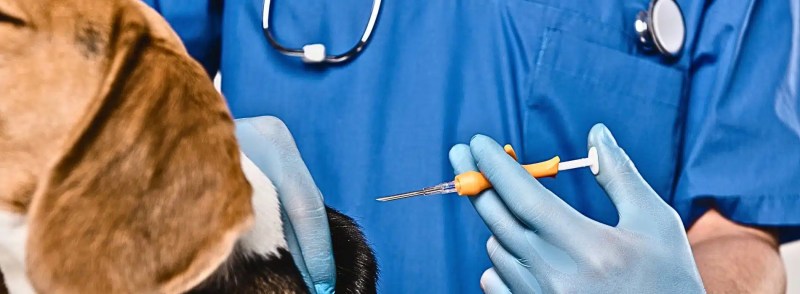How Much Does It Cost To Get My Dog Microchipped – Microchipping your dog is a simple way to help keep your pet safe. This small implantable chip contains a unique identification number that can be used to identify your dog if it is lost or stolen. Microchip surgery is an inexpensive procedure, but the price can vary depending on many factors.
For pet owners who want to keep their dog safe without spending money, it’s important to understand the cost of microchipping. The cost of a microchip can vary depending on the size and breed of your dog, as well as the location and type of chip used. Registering your dog’s microchip and updating our recovery database may also cost extra.
How Much Does It Cost To Get My Dog Microchipped

A microchip is a small device about the size of a pea that is placed under the skin in the middle of your dog’s shoulder. This device contains a unique identification number that can be read with a unique scanner. The tracking number links the owner’s information to our database, making it easy to contact the owner of a lost dog.
Average Cost Of A Vet Visit For Dogs: Must-know Facts And Figures
Microchip uses RFID (radio frequency identification) technology to send signals to the scanner. When the scanner passes over the implanted microchip, the device emits a signal that the scanner can pick up. The scanner then displays a unique identification number associated with the microchip.
Microchipping your dog will give you peace of mind if your dog is lost or stolen. Unlike collars or tags that can fall off or be removed, microchips are a permanent form of identification. Many animal shelters and animal hospitals also have scanners so they can quickly identify lost dogs and contact their owners.
The cost of microchipping your dog may vary depending on your location and the veterinarian who performs the program. On average, it costs between 25 and 50 dollars. Although this may seem like an additional expense, the benefits of microchip implantation far outweigh the costs.
Microchip technology is a popular way to identify dogs, and it costs money. The cost of removing a dog depends on many factors, including the type of microchip used, the veterinary clinic performing the procedure, and where the dog’s owner lives. Some of the cost factors to consider include:
Which Pet Microchip Scanner Is The Best?
The microchip itself costs between $25 and $50, depending on the brand and type of chip. Some veterinary hospitals or clinics may charge an additional fee of between $50 and $100 for the procedure. In addition to the cost of the microchip, there is a registration fee of $10 to $20. This fee is paid to the registrar responsible for keeping the microchip database.
The cost of placing a microchip in a dog can vary depending on the veterinarian or veterinarian performing the procedure. Some veterinarians may charge more for services, while others may offer discounts or bundles that include additional services such as vaccinations or health exams. It’s important to shop around and compare prices to find the cheapest option.
The cost of microchipping your dog can also vary depending on your location. Prices may be higher in some areas due to the high standard of living or the need for veterinary services. Prices may be lower in other areas due to less health or need for veterinary services. It is important to research microchip prices in your area to get the most accurate information.

In conclusion, the cost of microchipping a dog can vary depending on many factors, including the type of microchip used, the veterinary clinic performing the procedure, and where the dog’s owner lives. It is important to do your research and compare prices to find the cheapest option.
Dog Vaccinations Cost: What You’ll Pay
Microchips are a simple, reliable and effective way to identify your dog if he is lost. This procedure involves inserting a small microchip, about the size of a pea, under the skin of your dog’s neck. Here’s what you need to know about the microchip process.
Before starting the transplant process, the dog owner must make sure the dog is vaccinated and in good general health. Your vet will also check your dog’s medical history to make sure there are no illnesses that could complicate surgery.
The conversion process is quick and easy. Your vet uses a needle to inject the microchip under your dog’s skin, usually in the neck. The process usually takes a few minutes and is usually tolerable for the dog.
To reduce complications, your doctor may use a local anesthetic to numb the area before the injection. However, most dogs do not require anesthesia for the procedure.
What Is A Pet Microchip? The 411 On Microchipping Dogs And Cats
After the transplant, the dog owner must keep it clean and dry for several days. Your veterinarian will give you specific instructions on how to take care to prevent infection.
Although the procedure itself is painless, it is important to note that some dogs may experience discomfort or pain at the injection site for several days after the injection. However, this problem should resolve itself without intervention.
In short, the microchipping process is a reliable and effective way to identify your lost dog. Although this procedure may cause discomfort or pain, it is usually tolerated by the dog and requires immediate medical attention after the injection.

Microchipping your dog is an important step to ensure his safety and increase the chances of your dog being lost. However, the microchip alone is not enough to confirm the union. It is also important to register your microchip and update your information.
Cat Microchip Cost: Breaking Down The Process
When a dog is microchipped, a unique identification number associated with the chip is recorded in a book or database. This number is linked to the owner’s information. If your dog is lost and found by a person, vet or vet, you can use a microchip scanner to read the ID number on the chip. You can then use the scanner to retrieve your dog’s information from the library or database.
Without registration, the microchip is useless. If the owner’s information is not matched to the microchip ID number, there is no way to contact the owner and reconnect with him.
The process of registering your dog’s microchip is simple and can usually be done online or over the phone. Microchip or registration companies will ask for basic information, including the owner’s name, address, phone number, dog’s name, breed and age. Once the information is entered into the database, it is linked to a microchip ID number.
It’s important to note that each small business may have its own registration and storage methods. It is best to choose a reputable company and register your microchip in their database.
Here’s How Much It Costs To Microchip A Dog (on Average)
In order to successfully match your lost dog, it is important to update your information. If the owner moves or changes the phone number, the information in the microchip registry or database must be updated. Many companies allow owners to update information online or over the phone.
Owners should also consider registering their dog’s microchip with the local pet store. The database is not affiliated with any microchip company and can be accessed by boarders or veterinarians using a microchip scanner. Registering with a pet store increases your chances of finding your lost dog again.
In conclusion, registering your dog’s microchip and updating his information is an important step to increase your dog’s safety and increase the chances of being reunited with him if he goes missing. It is important to choose a reputable microchip company and not only register with the company’s database, but also register with the pet store.

There are many methods available to pet owners when it comes to locating a lost dog. Microchips are a popular option, but not the only option. In this section, we will look at the pros and cons of microchip implantation compared to other forms of identification.
Microchip Your Dog: Costs Explained In Canada
One of the most common ways to identify dogs is collars and tags. This is a simple and cheap method that allows anyone who sees a lost dog to quickly identify its owner. Collars and tags can be customized with your dog’s name, owner’s phone number and other important information.
However, tags and tags can also be easily lost or removed. If the dog wanders off or someone removes it on purpose, there is no way to know the owner. Additionally, labels and tags can age and become unreadable.
GPS trackers are another option for pet owners. This device uses GPS technology to track your dog’s location in real time. Some GPS devices also come with additional features such as activity tracking and virtual fencing.
GPS trackers can be useful, but they have their limitations. For example, you need batteries too

